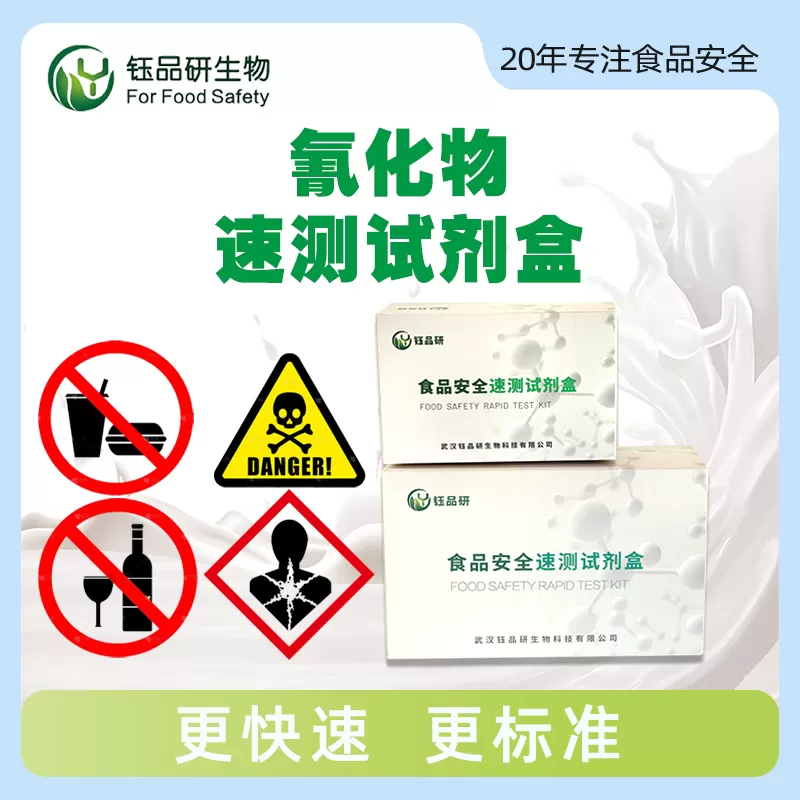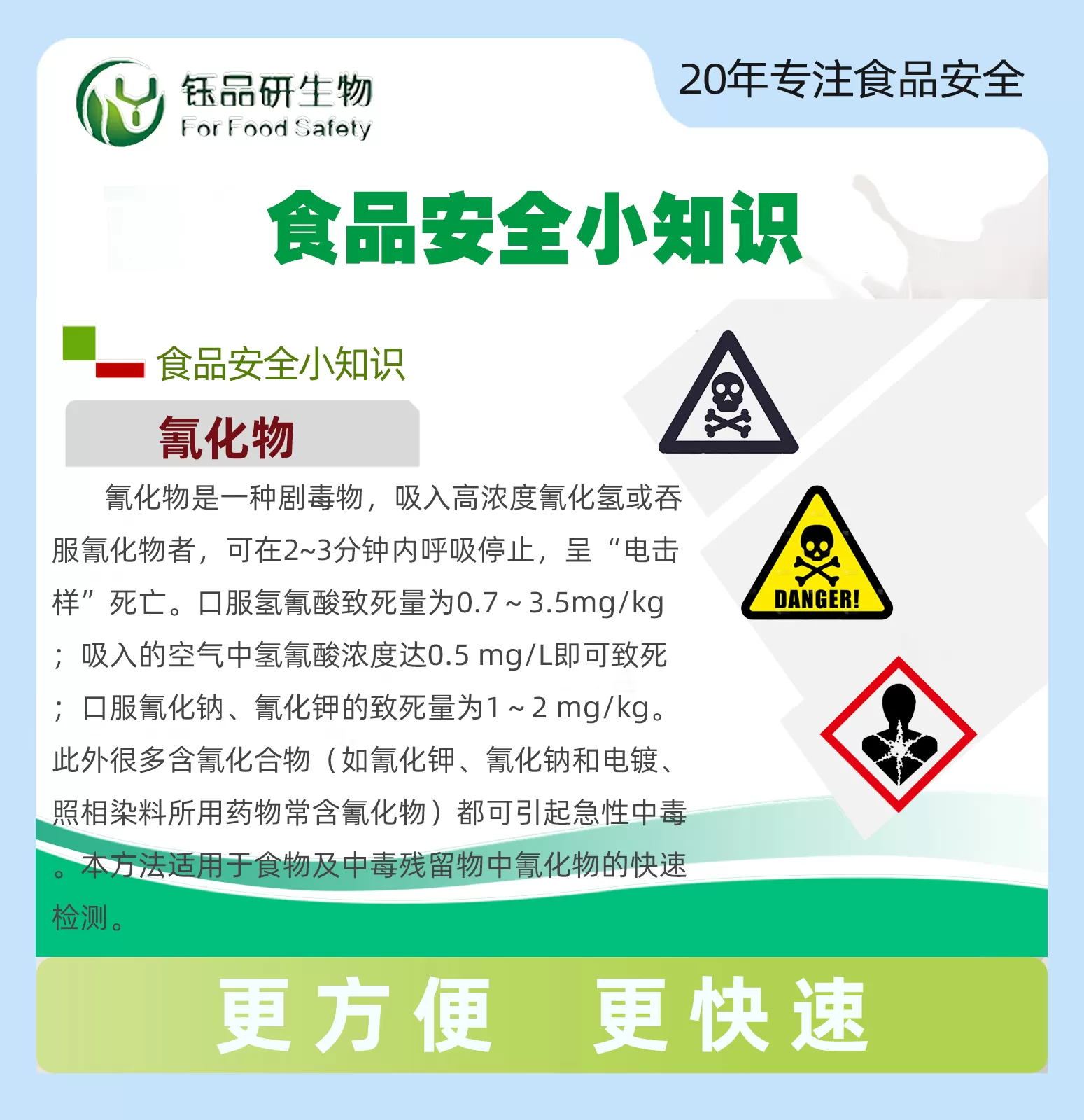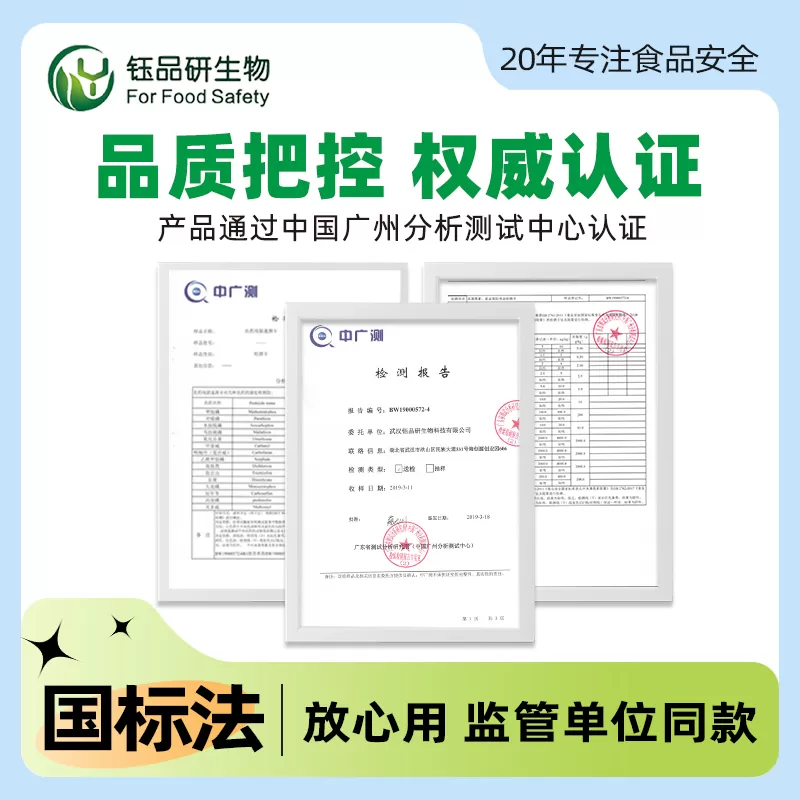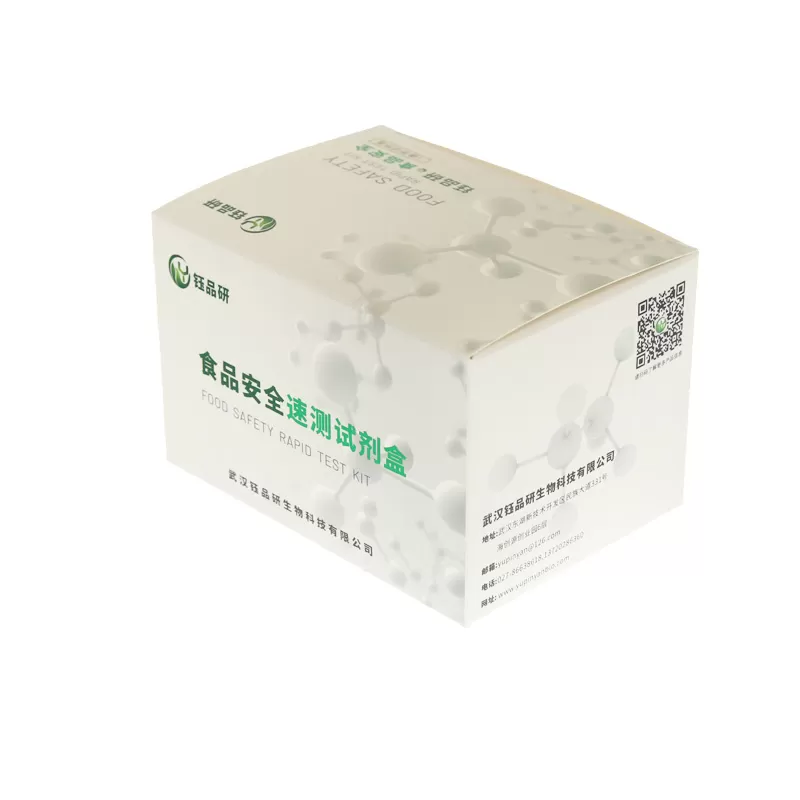Instructions for Cyanide Quick Test Kit
(Version Number: V1.0.0)
Product Number: YC052N01H
1 Introduction
Cyanide is a highly toxic substance. Those who inhale high concentrations of hydrogen cyanide or swallow cyanide can stop breathing within 2 to 3 minutes and die as an "electric shock". The lethal dose of oral hydrogen cyanide is 0.7 to 3.5mg/kg; the concentration of hydrogen cyanide in the inhaled air can be lethal up to 0.5 mg/L; the lethal dose of oral sodium cyanide and potassium cyanide is 1 to 2 mg/kg. In addition, many cyanide-containing compounds (such as potassium cyanide, sodium cyanide and drugs used in electroplating and photographic dyes often contain cyanide) can cause acute poisoning. This method is suitable for the rapid detection of cyanide in food and toxic residues.
2 detection principle
Cyanide produces hydrocyanic acid in case of acid, and hydrocyanic acid interacts with the reagent loaded on the test paper to generate an orange compound, so as to judge the negative positive.
3 Detection range
Suspected poisoning samples and vomit, gastric dissolution and leftovers, etc.
4 Technical indicators
Detection limit: 0.2mg/kg
5 Sample determination
5.1 Take 1 cyanide glass tube, insert a piece of test paper, add 1 to 2 drops of reagent A to the test paper, make the test paper completely wet, and insert the cyanide glass tube into the perforated rubber plug.
5 Weigh 5g (mL) of the sample in a triangular bottle, add 20 mL of distilled water or purified water, add about 0.5g of reagent B (10 flat spoons of ear scoop), immediately plug the silicone plug with the cyanide detection tube, gently shake to dissolve the reagent B. (Note: Do not submerge the cyanide detection tube into the liquid, so as not to dissolve the reagent on the test paper and make the result false negative.) Put the triangular bottle into a water bath at 40 ° C to 50 ° C and heat it for 30 min.
5 Observe the discoloration of the test paper strip in the tube. The test paper does not change color, indicating that the cyanide reaction is negative; if the tip of the test paper turns orange red, indicating that the cyanide reaction is positive, it needs to be sent to the laboratory for quantitative testing.
6 Precautions
6.1 When adding reagent B, it should be added at one time and quickly covered with a rubber plug
6 When positive samples are detected, the determination should be repeated, and a blank controlled experiment of water should be done under the same conditions.
6 The triangular bottles and test tubes that have been in contact with positive samples should be fully cleaned to prevent interference in the next use.
6 This product is only used for initial screening, and the final results are subject to the relevant national standard methods.
7 Storage conditions and valid period
Reagents are stored in a cool and dry place at 4-30 ° C, protected from light, and the valid period is 12 months.
8 Kit packing list
Specifications: 20 times/box
Name
Quantity
Unit
Remarks
Reagent A
1
bottle
reagent B
1
tube
test paper
1
pack
small sampling spoon
1
straw
1
pack
Repeated after cleaning
10ml centrifuge tube
1
pack
Repeated after cleaning
Cyanide detector
1
set
manual





